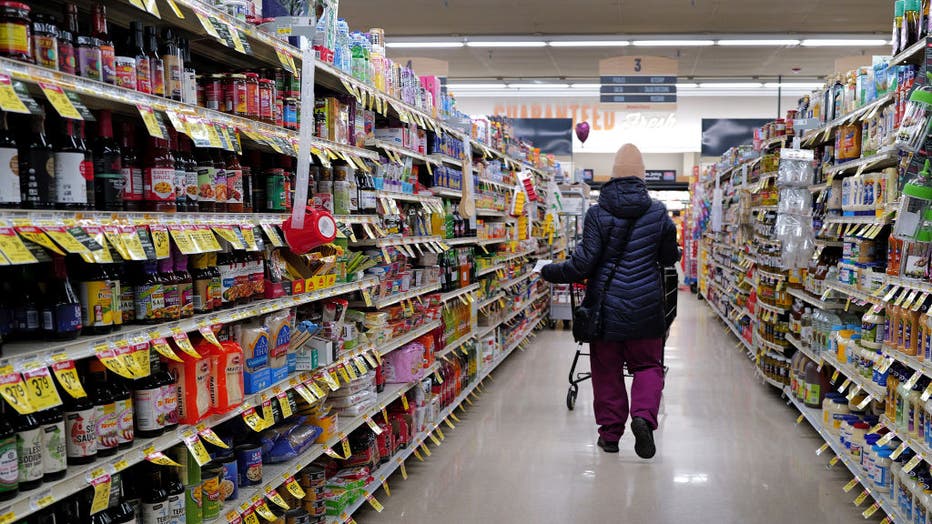Why are food prices so high despite inflation falling?
LOS ANGELES - Despite the growth of the U.S. economy and a slowdown in inflation, numerous Americans continue to experience financial strain – especially at the grocery store.
Recent findings from Purdue University's Consumer Food Insights report reveal that many individuals still feel a lack of relief, even as inflation levels approach pre-pandemic figures.
The report involved a survey of over 1,200 Americans nationwide. It found that the average weekly consumer believes their food expenses rose to $195 per week, up 7% from February of last year.
"While food price inflation over the last year officially is 2.1%, respondents in our survey tell us it is much higher. They tell us food prices have risen by 6% in the past year," said Joseph Balagtas, professor of agricultural economics and interim director of the Center for Food Demand Analysis and Sustainability at Purdue.
Why does food seem so expensive?

A customer shops at a grocery store on February 13, 2024 in Chicago, Illinois. Grocery prices are up 0.4% from December and 1.2% over the last year, the slowest annual increase since June 2021.
So what's causing shoppers to perceive prices as being higher than they are?
"Official measures of inflation are either month to month or year over year," Balagtas explained. "Consumers might not necessarily think in terms of years, but, they might think of prices today relative to some period in the past, maybe before the pandemic."
Adding insult to injury, researchers say it's harder to notice decreasing food prices when the overall cost of living remains steep.
"When, for example, your rent rises or your housing payment rises, that leaves less money to spend on other things, including food," Balagtas noted.
What else do the numbers say?
Since the beginning of 2021, grocery prices have surged by over 21%, surpassing the overall inflation rate of 18% for the same period.
Although the rate of price increases for food has slowed recently, the cost of many essential grocery items continues to rise steadily. Experts caution that relief for consumers is unlikely in the near future.
"Prices very rarely go back. There's disinflation, meaning the rate of increase slows down. But the way we dig ourselves out of this is that people make more money above the rate of inflation," Robert Frick, corporate economist at Navy Federal Credit Union, told FOX Business. "That's happening now, but it's not a quick solution. It's going to take two or three years before people feel real relief from the surge in inflation, especially with things like food."
Food inflation has been particularly challenging for Americans, with more than two-thirds of voters citing higher food prices as the most significant impact of inflation, according to a separate survey conducted by Yahoo Finance/Ipsos in November 2023. This percentage is over 50 points higher than any other category, including gasoline, transportation, and housing expenses.
Despite a significant decrease from its peak of 9.1% in June 2022, inflation continues to surpass the Federal Reserve's 2% target. Compared to January 2021, just before the onset of the inflation crisis, prices have surged by 17.6%.
RELATED: Three reasons why egg prices are so high ahead of Easter
The surge in food prices can be attributed to a multitude of factors. Ongoing supply chain disruptions, coupled with the smallest cattle inventory in 73 years, have contributed to the upward trend.
Additionally, a widespread outbreak of Avian flu has severely impacted poultry supply, resulting in soaring costs for chicken and eggs. The global grain deficit, exacerbated by the prolonged conflict in Ukraine, has further compounded the situation. Furthermore, the rise in wages for food service workers in various sectors, including grocery stores, warehouses, and processing plants, has prompted businesses to pass on these increased costs to consumers.
FOX Business contributed to this story. It was reported from Los Angeles.

